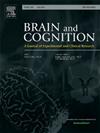Cognition, emotion, and the default mode network
IF 1.4
3区 心理学
Q3 NEUROSCIENCES
引用次数: 0
Abstract
The Default Mode Network (DMN) is increasingly recognized as a key hub where cognitive and emotional processes converge, particularly through its role in integrating episodic memory and emotional experiences. The current mini-review highlights three distinct patterns of brain activity within the DMN associated with emotional processing. The first pattern indicates that, while the ventromedial prefrontal cortex (vmPFC) encodes the pleasantness of memories, other DMN regions support episodic content construction. The second pattern suggests the interaction between the DMN and regions outside of it, such as the amygdala and anterior insula, which contribute to the emotional significance of memories. The third pattern shows widespread activation across the DMN for both pleasant and unpleasant events, challenging the notion of a modular organization of cognition and emotion. The first two patterns appear to result from methodological choices in some studies, while a non-modular view of cognition and emotion in the DMN has recently emerged as the most plausible. These findings support the integration of cognitive and emotional processes within the DMN, suggesting that it plays a fundamental role in constructing coherent and emotionally charged narratives.
认知、情感和默认模式网络
人们越来越认识到,默认模式网络(DMN)是认知过程和情绪过程交汇的关键枢纽,尤其是它在整合偶发记忆和情绪体验方面的作用。本期微型综述重点介绍了默认模式网络(DMN)中与情绪处理相关的三种截然不同的大脑活动模式。第一种模式表明,当腹内侧前额叶皮层(vmPFC)编码记忆的愉悦性时,其他DMN区域支持情节性内容的构建。第二种模式表明,DMN 与其外部区域(如杏仁核和前脑岛)之间存在相互作用,这些区域有助于记忆的情感意义。第三种模式显示,愉快和不愉快事件在整个DMN中都有广泛的激活,这对认知和情绪的模块化组织概念提出了挑战。前两种模式似乎是某些研究中方法学选择的结果,而最近出现的关于DMN中认知和情感的非模块化观点则是最合理的。这些研究结果支持认知和情感过程在DMN中的整合,表明它在构建连贯的情感叙事中发挥着根本性的作用。
本文章由计算机程序翻译,如有差异,请以英文原文为准。
求助全文
约1分钟内获得全文
求助全文
来源期刊

Brain and Cognition
医学-神经科学
CiteScore
4.60
自引率
0.00%
发文量
46
审稿时长
6 months
期刊介绍:
Brain and Cognition is a forum for the integration of the neurosciences and cognitive sciences. B&C publishes peer-reviewed research articles, theoretical papers, case histories that address important theoretical issues, and historical articles into the interaction between cognitive function and brain processes. The focus is on rigorous studies of an empirical or theoretical nature and which make an original contribution to our knowledge about the involvement of the nervous system in cognition. Coverage includes, but is not limited to memory, learning, emotion, perception, movement, music or praxis in relationship to brain structure or function. Published articles will typically address issues relating some aspect of cognitive function to its neurological substrates with clear theoretical import, formulating new hypotheses or refuting previously established hypotheses. Clinical papers are welcome if they raise issues of theoretical importance or concern and shed light on the interaction between brain function and cognitive function. We welcome review articles that clearly contribute a new perspective or integration, beyond summarizing the literature in the field; authors of review articles should make explicit where the contribution lies. We also welcome proposals for special issues on aspects of the relation between cognition and the structure and function of the nervous system. Such proposals can be made directly to the Editor-in-Chief from individuals interested in being guest editors for such collections.
 求助内容:
求助内容: 应助结果提醒方式:
应助结果提醒方式:


